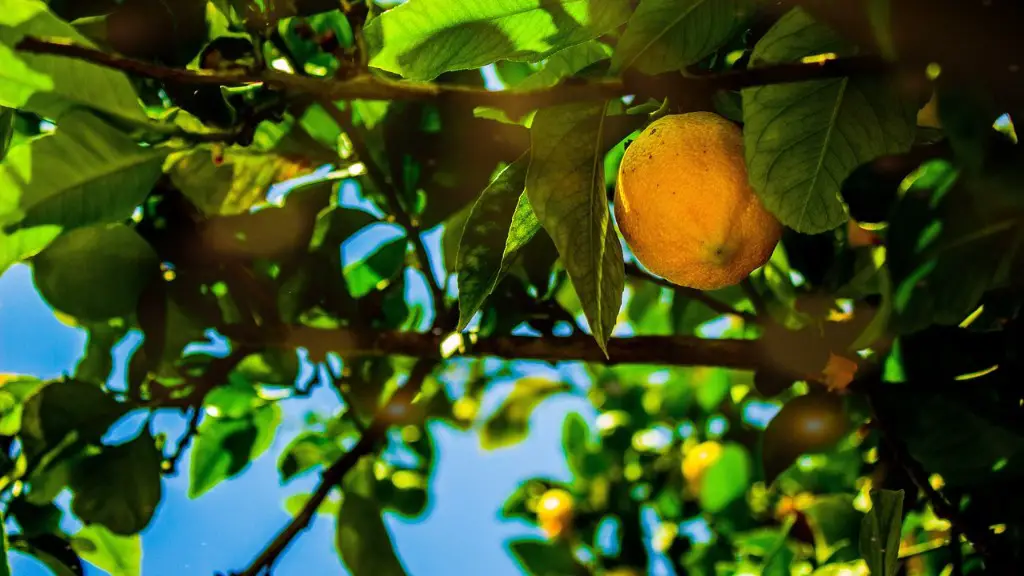What Causes the Avocado to Fall Off the Tree?
Avocados are a beloved crop in many parts of the world, boasting a wide array of blooms and fruits that can thrive in different climates. But one of the most common questions asked by avocado growers is, “Why are my avocados falling off the tree?” It is a surprisingly tricky question to answer, as there are dozens of potential causes of premature fruit drop. Let’s take a deeper dive into this phenomenon and explore some of the reasons why avocados fall off the tree.
Environmental Factors
The environment can play a significant role in an avocado’s development and, consequently, in its potential to fall from the tree. A number of environmental factors can contribute to fruit drop, including humidity, temperature, light, and water.
For example, prolonged dry spells can lead to a large number of flowers being aborted and thereby reducing the amount of fruit on the tree. Similarly, intense heat and direct sunlight can cause fruit drop, as low temperatures and excessive shade inhibits growth.
Pollination Issues
One of the most common causes of premature fruit drop is pollination problems. If pollination is inadequate, flowers can be aborted and the development of fruit can be interrupted later on in the process. Most avocado trees rely heavily on honeybees for pollination, and many avocado farmers supplement with manual pollination methods to ensure a high yield of fruit.
Pest Infestations
Avocado trees are vulnerable to a range of pests, such as mites and thrips, which can cause premature fruit drop. These pests can cause young fruit to fall from the tree or interrupt their growth, resulting in 12 fruit that is undersized and of low quality. Therefore, avocado growers must be vigilant about keeping pests off of their trees in order to prevent premature fruit drop.
Nutrient Deficiencies
Inadequate nutrition can directly lead to premature fruit drop. For example, if trees are deficient in potassium, calcium, or magnesium, the flowers and fruit may abort, resulting in a decreased yield. Similarly, trees that don’t receive enough nitrogen may produce fewer flowers, which will result in fewer fruits.
Incorrect Pruning
Incorrect pruning is another common cause of premature fruit drop. Pruning too early in the season can lead to many flowers being aborted and, subsequently, to reduced yields. Pruning should be postponed until late in the season and should be done conservatively. Furthermore, once branches are pruned, they should not be touched until the following season.
Biennial Bearing Issues
Biennial bearing is a phenomenon in which trees produce very few flowers and fruits in one year, followed by an abundant crop the next. This can cause avocados to fall from the tree in one year and then be abundant in the next year. Avocado trees tend to be biennial bearers, so this can be a regular occurrence for some growers.
Irregular Watering
Avocado trees need to be watered regularly in order to maximize the yield of fruit. Irregular watering can lead to reduced flowering and, eventually, to reduced yields. Furthermore, waterlogged roots can also cause avocados to fall prematurely from the tree.
Mechanical Damage
Mechanical damage can cause flowers and fruit to fall from the tree prematurely. Animals, like birds or rodents, can damage tree limbs and cause flowers and fruit to drop. Similarly, wind and rain can cause branches to break, leading to flower and fruit drop.
Inadequate Fertilization
Fertilization plays an important role in an avocado tree’s growth and development. Avocados require special fertilization with a high nitrogen and potassium content to thrive. If an avocado tree does not receive enough of these vital nutrients, it can result in flowers and fruit falling prematurely from the tree.
Competition For Nutrients
If an avocado tree is competing with other plants or trees for nutrients, it can lead to decreased flowering and, eventually, to fruit drop. For example, if an avocado tree is planted near a large tree with deep roots, the avocado tree may not be able to access enough water and nutrients to produce flowers and fruits.
Avocado Growth Cycles
Avocados have a unique growth cycle, which can result in a variety of fruits dropping throughout the season. Unlike other trees, which tend to produce fruit after a period of flowering, avocado trees produce a massive number of flowers and fruits in a short period of time. This can cause many fruits to drop prematurely.
Treetop Growth
Treetop growth is a phenomenon in which the top part of an avocado tree grows more quickly than the rest. If the top of the tree grows too fast, it can put stress on the branches, leading to weak growth and, eventually, to premature fruit drop.
Negative Effects of Humidity
Avocados require relative humidity levels of 70-80% in order to produce flowers and fruit. If relative humidity levels exceed these limits, it can lead to flower and fruit drop. High humidity can also promote the growth of mold and mildew, leading to more significant damage to the tree and a decreased yield of fruit.
Premature Harvesting
Lastly, Premature harvesting of avocados can cause premature fruit drop. When avocados are harvested prematurely, they can go through a process known as “weaning,” in which the fruit aborts, leading to a decrease in the overall yield. It is important to wait for the avocados to reach maturity before harvesting in order to maximize the yield.

